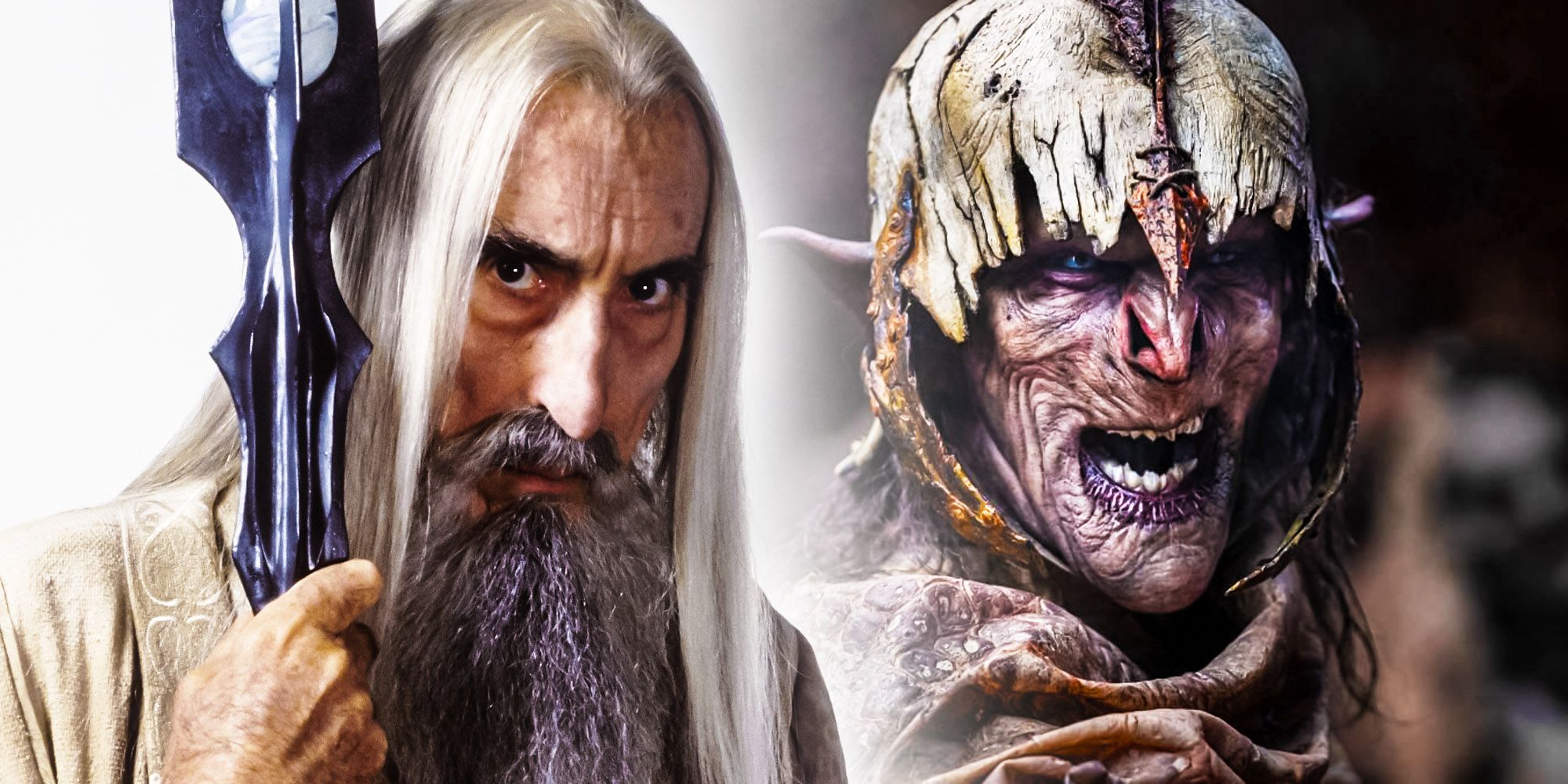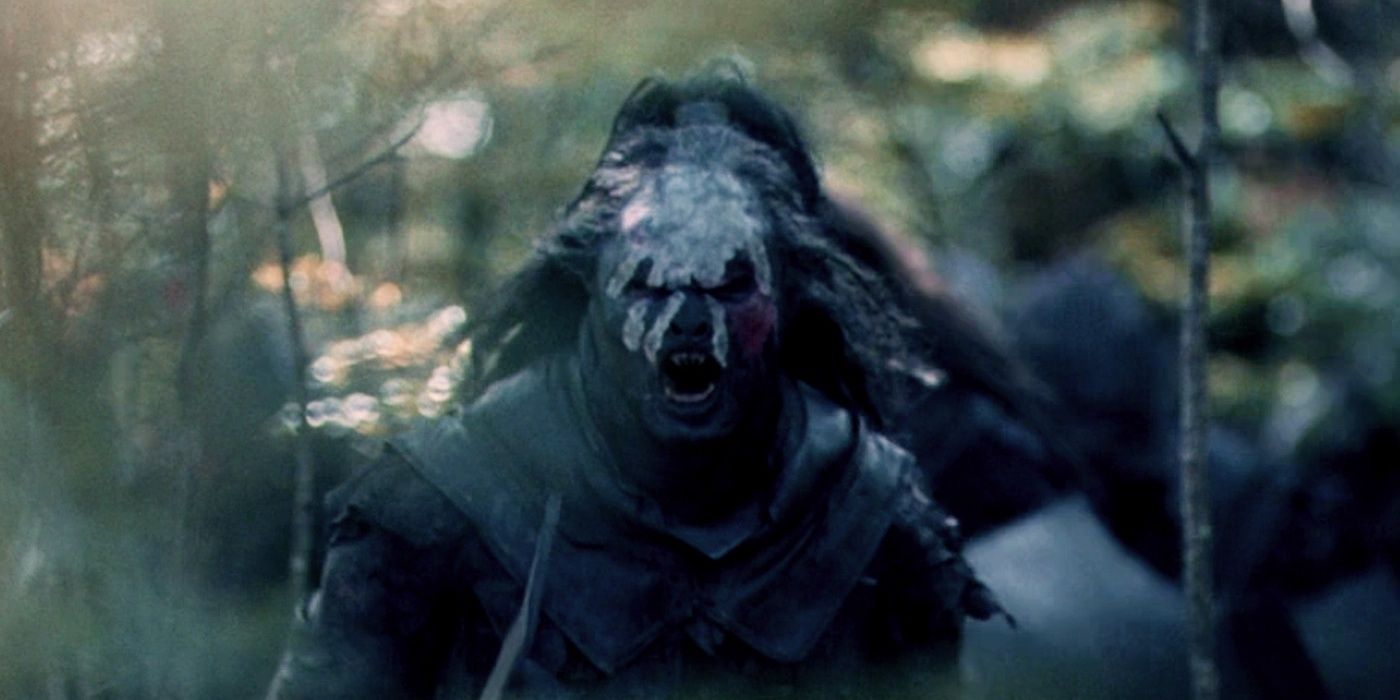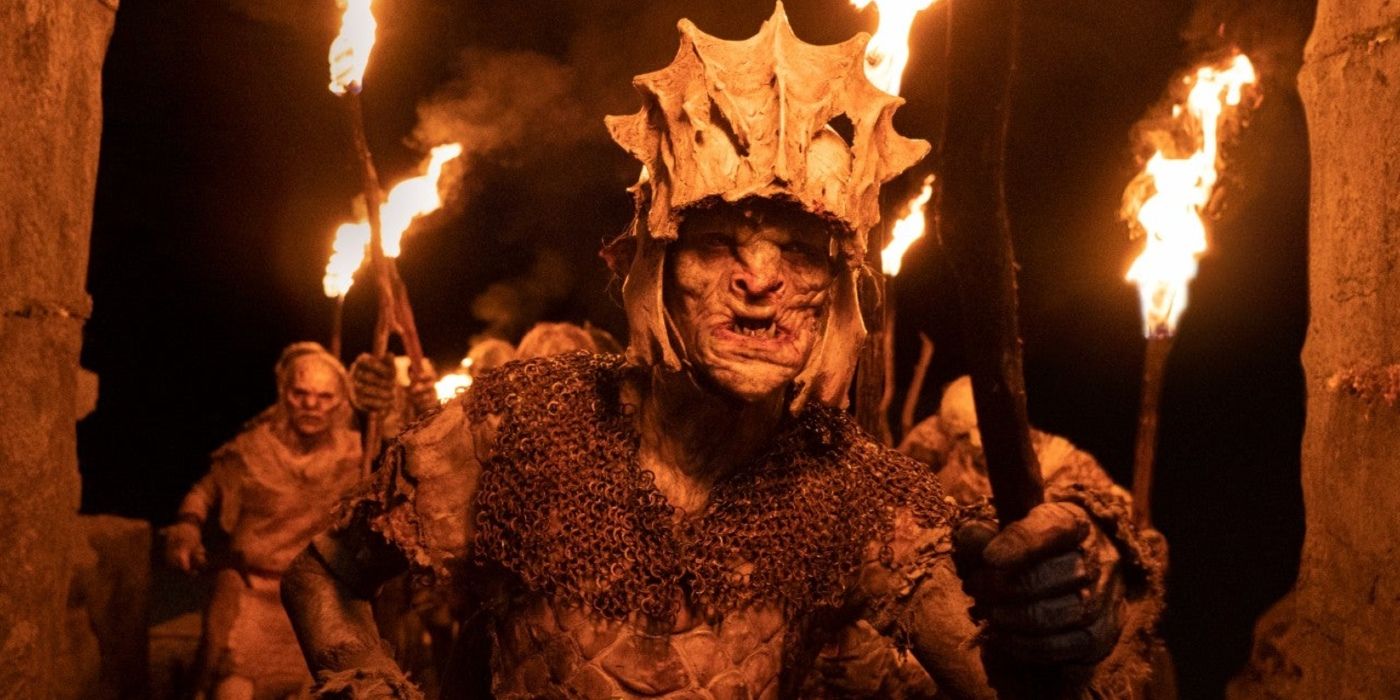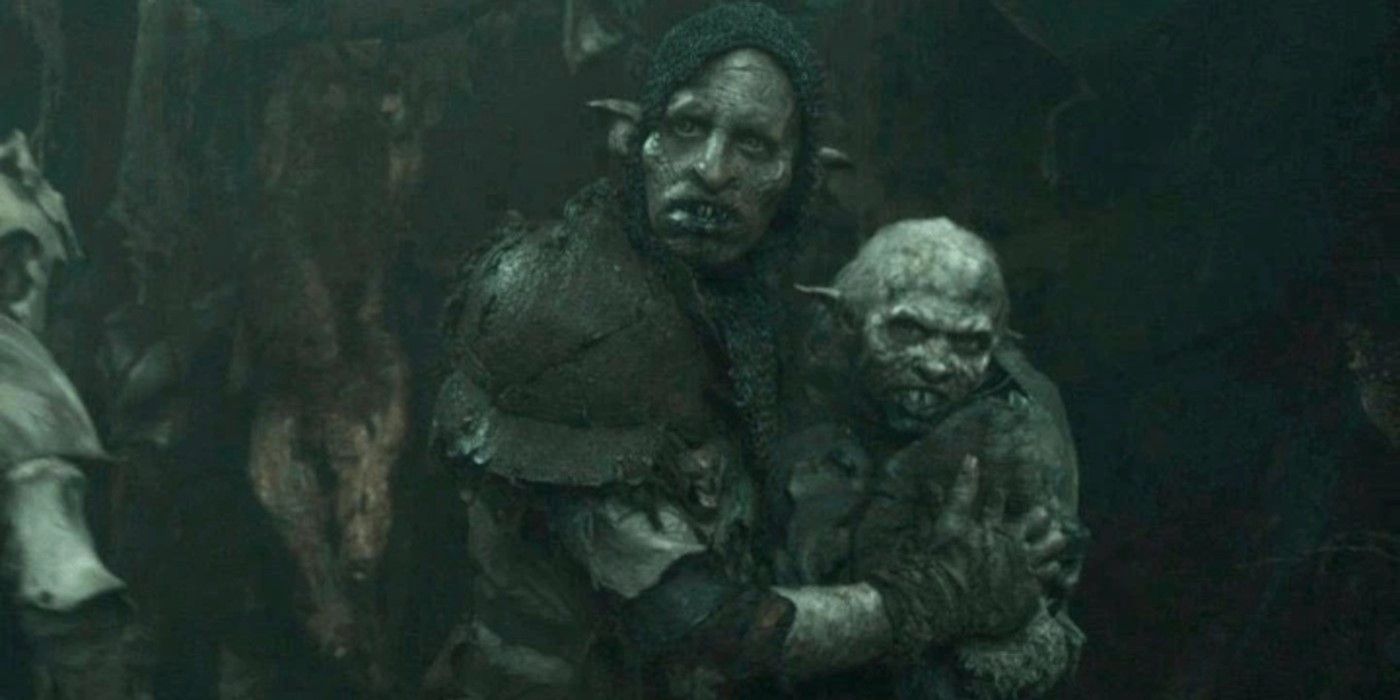
The Rings of Power‘s Uruks aren’t quite the same as The Lord of the Rings‘ Uruk-hai — here’s how they differ. Galadriel finally has a chance to interrogate an Orc The Rings of Power season 1, episode 6, catching the Orc commander responsible for invading Middle-earth’s Southlands. She deduces Adar is a Moriondor – an Elf captured by Morgoth and turned into one of the very first Orcs. When Galadriel points this out, Adar responds to the word “Orc” by correcting, “Uruk… We prefer Uruk.”
The difference is one of linguistics. Orcs use a foul speech known as the Black Tongue, and “Uruk” is the word they use to describe themselves. “Orc” derives from the Elven Sindarin language, and since the two races utterly despise each other, it’s no surprise Adar’s people prefer being known as Uruks. For The Lord of the Rings fans, “Uruk” will be more closely associated with Saruman the White, who creates a breed of Orcs known as Uruk-hai to pursue the Fellowship and assault Rohan. However, there are considerable differences between Uruks as seen in The Rings of Power and the Uruk-hai from Lord of the Rings.
Uruk-hai vs. The Rings Of Power’s Uruks – What’s The Difference?
Saruman’s Urak-hai Are Tougher Than Standard Orcs

J.R.R. Tolkien never reveals precisely how the corrupted wizard creates this new-and-improved army of Orcs. They appear suddenly out of Isengard sometime around the War of the Ring wearing their master’s white hand symbol, wreaking havoc upon both the people of Rohan and Boromir’s torso. “Uruk-hai” simply means “Orc-folk” in Black Tongue, which plays into unconfirmed suggestions that Saruman created them by crossing Orcs with Men.
The Lord of the Rings‘ Uruk-hai are often referred to as “Uruks” for simplicity’s sake. When Adar says “Uruk” in The Rings of Power, however, he’s referring to the entire Orc race. Rather than denoting a biological difference as it does in The Lord of the Rings, the term becomes a matter of preference for The Rings of Power.
How The Rings Of Power’s Orcs Are Different To LOTR
The Orcs In The Prequel Series Are Closer To Tolkien’s Depiction

Adar’s soldiers in The Rings of Power may not be Black Uruks or Uruk-hai, but they’re still not totally like the Orcs in The Lord of the Rings. Peter Jackson’s movies often depict ordinary Orcs operating just fine in broad daylight, making them different to their sun-averse Amazon counterparts. Tolkien’s original books, however, make several references to Orcs hating sunlight, bringing The Rings of Power‘s fodder villains closer to the source material.
It could be argued that Orcs in The Rings of Power are more sun-sensitive than in the books, and if that’s the case, it’s likely because Adar’s Orcs have been starved of sunlight for so long and hail from Morgoth’s era of darkness in Middle-earth. Later generations likely would’ve developed slightly better resistance.
Physically, The Rings of Power‘s Orcs have been designed as rougher and more beastly – a reflection of the Amazon series’ earlier placement in Tolkien’s timeline. And yet the biggest difference to The Lord of the Rings‘ Orcs is cultural. Whereas Orcs are typically concerned only with eating and carrying out orders, Adar in The Rings of Power seeks to give his followers a home – a safe, sunless haven where they can’t be exploited by Morgoth or Sauron. Orcs – Uruk or otherwise – showed no such thoughts of independence in The Lord of the Rings.
The Role Orcs Play In LOTR And The Rings Of Power
Orcs Mostly Exist To Give The Forces Of Good Something To Fight

While J.R.R Tolkien is known for the complexity of his work, the purpose of Orcs in his books is really quite shallow. Orcs seem to exist purely so that Sauron, Saruman, Morgoth, or any of the other villains have some foot-soldiers for the forces of good to fight. This isn’t a detriment or criticism of Tolkien’s work, but it still stands true. The author behind Middle-earth did reveal a fair amount about the Orc’s origins here and there, but they never serve any narrative purpose beyond being a presence for the likes of Aragorn and the Fellowship to swing their swords at (or fire their bows, or throw their axes, depending on the character).
However, Amazon’s The Lord of the Rings: The Rings of Power has attempted to humanize the Orcs somewhat, giving them a place in the wider tapestry of Middle-earth’s many races and peoples beyond being the minions of multiple antagonists. For example, The Rings of Power season 2 showed viewers something they’d never seen – a baby Orc, complete with a worried Orc mom and protective Orc dad.
This was a huge evolution for the on-screen portrayal of the race, whose origins in Peter Jackson’s The Lord of the Rings movies was only shown when one of Saruman’s Uruk-hai emerged from a skin-like pod in deep mud (and even then, this was the origin of an Uruk-hai, not all Orcs). It made the Orcs more relatable, and showed that they’re not simply mindless monsters but a race with a history and culture just as valid as that of Elves, Humans, or Hobbits.
Orcs are still evil in The Rings of Power, and loyally aligned to the forces of darkness that will eventually be helmed by Sauron and Mordor. However, their purpose now is slightly elevated. Mordor is for the Orcs the promise of a homeland, Mount Doom blocking out the sun with its ash clouds means Orcs can travel freely during the day without worrying about sunlight. This also adds significance to a line from The Return of the King, when Gothmog the Orc general snarls “The Age of Men is over, the Time of the Orc has come”.
The Rings of Power has created a wider narrative for Orcs that compliments Lord of the Rings. Rather than simply being barbaric servants of evil, they’re now portrayed as a race seeking to finally have an age where they’re not doomed to lurk in the crevices and shadows of Middle-earth. This also makes the difference between Uruks and Saruman’s Urak-hai much greater. Whereas the Orcs are now a race that have been dealt a bad hand and are simply doing their best to survive (which, unfortunately for them, means having to align with the likes of Sauron), the Uruk-hai are exactly the borderline-mindless killing machines Tolkien depicted Orcs as in his books.





